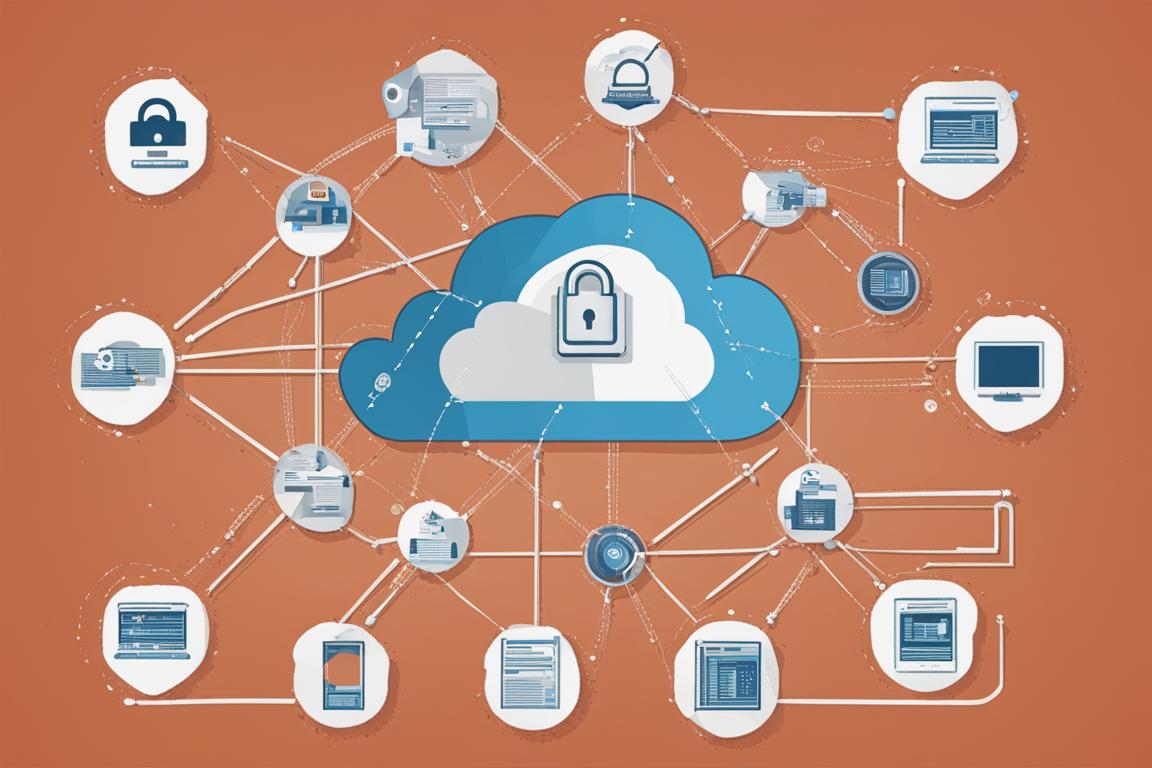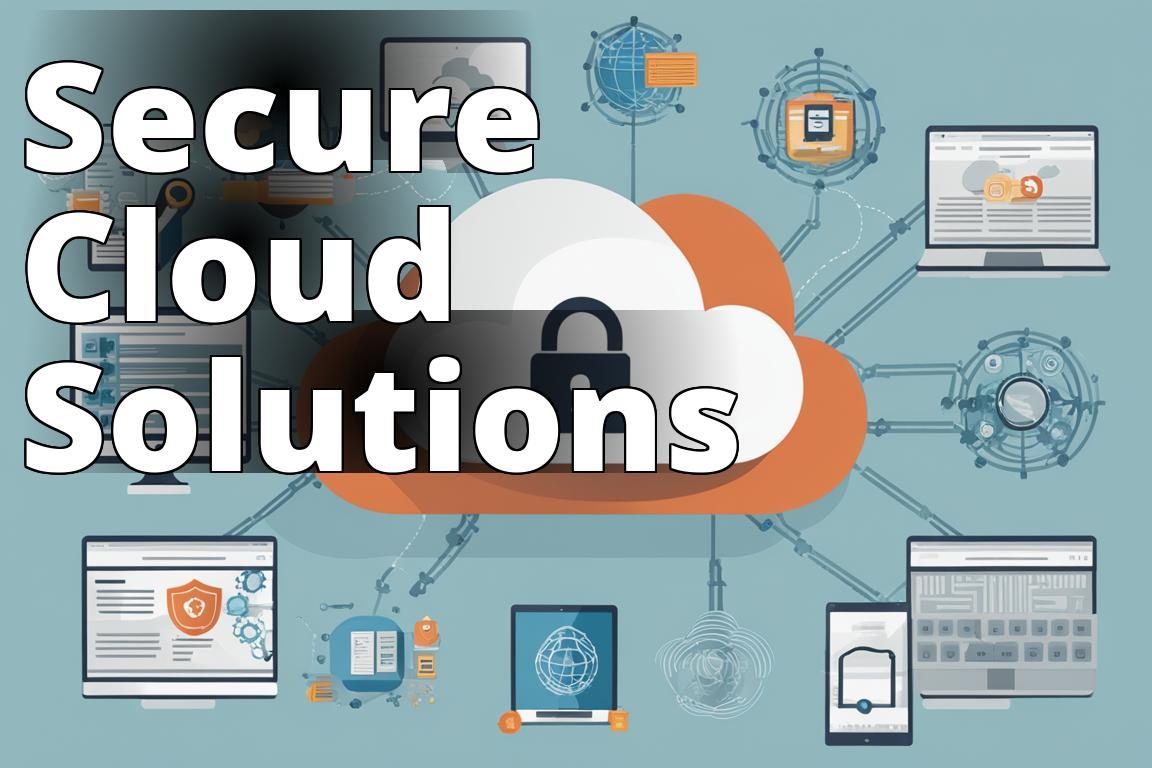Cloud security isn’t just a necessity; in today’s digital landscape, it’s an imperative. Gone are the days when basic firewalls and antivirus programs sufficed. As businesses migrate to the cloud, the complexity of cybersecurity threats grows, making robust cloud security solutions non-negotiable.
Learn about Cloud Computing & Security
- Cloud security: Understand what cloud security is and how it works.
- Benefits and risks: Discover the advantages and potential risks associated with cloud security.
- Types and tools: Explore the different types of cloud security and learn about various tools and software available for securing your cloud environment.
What is Cloud Security?
Cloud security is a broad term encompassing a range of strategies, technologies, and controls designed to protect data, applications, and the associated infrastructure of cloud computing. It is a critical aspect of IT for any organization that uses cloud-based services and infrastructure.
I remember when I first transitioned a business process to the cloud. The convenience was unparalleled, but it quickly became evident that traditional security measures were inadequate. Data wasn’t just behind our firewall anymore; it was flowing across the internet and required new forms of protection.
How Does Cloud Security Work?
Cloud security functions through a collection of policies, technologies, controls, and services that work together to protect cloud-based systems. These measures are designed to counteract interruptions due to system vulnerabilities, DDoS attacks, data breaches, and other threats.
In my experience, deploying cloud security effectively involves an intricate dance of integrating hardware and software capabilities. For instance, when we dealt with a spike in unauthorized access attempts, our cloud security provider stepped in swiftly with automated threat detection and response systems that neutralized the threat without human intervention.

What Are the Benefits of Cloud Security?
The advantages of robust cloud security are many, including:
- Data Protection: Encrypting data at rest and in transit to prevent unauthorized access.
- Regulatory Compliance: Meeting legal and regulatory requirements by ensuring data is handled securely.
- Scalability: Security that grows with your use of cloud resources.
From a personal standpoint, the peace of mind that comes from knowing your data is protected cannot be overstated. I’ve seen companies rebound from potential PR nightmares simply because their cloud security protocols were comprehensive enough to prevent data leaks.
What Are the Risks of Cloud Security?
Despite its strengths, cloud security isn’t without risks. These include:
- Data Loss: From accidental deletion to malicious attacks.
- Service Traffic Hijacking: Through phishing, fraud, and exploitation of software vulnerabilities.
- Insecure APIs: APIs that aren’t secure can offer attackers a way into the system.
Understanding these risks is the first step in mitigating them, something I learned the hard way when a seemingly minor API bug exposed sensitive information, leading to a frantic week of patches and apologies.
What Are the Types of Cloud Security?
1. Network Security
Network security in the cloud is designed to protect the integrity and usability of data and resources. For example, firewall configurations and intrusion detection systems are configured to safeguard against unauthorized access and threats.
2. Data Security
Data security involves encryption techniques and access controls that ensure only authorized users can access and manipulate data. My encounter with data theft underscored the importance of robust encryption practices that rendered stolen data useless to the thieves.
3. Identity and Access Management (IAM)
IAM ensures that only authorized individuals can access resources for the right reasons. This has been a cornerstone of our security strategy, ensuring that permissions are tightly controlled and regularly reviewed.
4. Application Security
This includes the use of antivirus programs, firewalls, and more sophisticated application security solutions to ensure that applications are secure and free from vulnerabilities. I’ve often seen overlooked application security lead to vulnerabilities across the cloud environment.
5. Security Operations
This encompasses the continuous monitoring and analysis of cloud security. Using automated security solutions to identify and react to security threats in real time has saved my team countless hours and potentially millions in losses.
How to Secure Your Cloud Environment
1. Use a Secure Password Manager
A secure password manager can help in generating and storing complex passwords, an essential defense against brute force and other types of cyberattacks.
2. Use Multi-Factor Authentication (MFA)
MFA adds an extra layer of security by requiring multiple forms of verification. This method once prevented a potential data breach in our systems, proving its worth.
3. Encrypt Your Data
Encryption should be non-negotiable in any cloud security strategy, ensuring data is unreadable to unauthorized users.
4. Use a VPN
A VPN can secure a direct internet connection to the cloud environment, ensuring data is transmitted securely.
5. Keep Your Software Up to Date
Regular updates are crucial, as they often include patches for security vulnerabilities.
6. Use a Cloud Access Security Broker (CASB)
A CASB provides a central point of control for cloud service use across multiple cloud platforms, crucial for maintaining visibility and control over your data.
Real-Life Cloud Security Implementation
Maria’s Experience with Cloud Security
Maria, a small business owner, was initially hesitant about migrating her company’s data to the cloud due to concerns about security. After researching best practices, she decided to implement multi-factor authentication (MFA) for all employees accessing the cloud environment. Maria also ensured that all sensitive data was encrypted both in transit and at rest.
By taking these proactive security measures, Maria was able to safeguard her company’s data and protect it from potential cyber threats. This real-life example highlights the importance of implementing robust security practices when utilizing cloud services.
Cloud Security Best Practices
Adopting best practices such as regular security assessments, adherence to strict security policies, and employee training can significantly enhance your cloud security posture. It’s about creating a culture of security mindfulness across all levels of the organization.
Cloud Security Tools and Software
Cloudflare
Cloudflare offers a range of products that help secure websites, applications, and APIs against DDoS attacks, customer data breaches, and malicious bot interference.
McAfee MVISION Cloud
MVISION Cloud provides a comprehensive security solution that protects data across all cloud services, including detection of compromised accounts and insider threats.
Microsoft Azure Security Center
This tool helps unify security management and enable advanced threat protection across hybrid cloud workloads.
Amazon Web Services (AWS) Security Hub
AWS Security Hub gives you a comprehensive view of your high-priority security alerts and compliance status across AWS accounts.
Google Cloud Security Command Center
This tool helps identify and mitigate risks in your Google Cloud resources, providing a clear overview of your security state.
IBM Cloud Pak for Security
IBM’s offering integrates tools to more effectively manage security across cloud environments, using AI to help detect and respond to threats.
Oracle Cloud Guard
Oracle Cloud Guard acts as a security automation tool that helps clients identify misconfigured resources and unsafe activity across their cloud environments.
Cisco SecureX Platform
A comprehensive security platform, Cisco SecureX provides visibility into security data across the entire enterprise, including cloud environments.
Palo Alto Networks Prisma Cloud
Prisma Cloud secures applications, data, and the entire cloud environment with a suite of security tools.
Check Point CloudGuard Network Security
This provides advanced threat prevention for all cloud environments and supports the most complex deployments.
Conclusion
The journey to robust cloud security is continual and evolving. From personal upheavals to professional milestones, my experience has taught me that while the cloud offers unmatched flexibility and efficiency, it also demands a new paradigm of security. By understanding the intricate layers of cloud security and implementing stringent, proactive measures, businesses can not only protect their data but also pave the way for innovative, secure technological adoption.
Questions
Question: What is cloud security?
Answer: Cloud security involves protecting data stored in cloud services from cyber threats.
Question: How does cloud computing impact security?
Answer: Cloud computing introduces new security challenges due to shared responsibility models and potential vulnerabilities.
Question: Who is responsible for cloud security?
Answer: Both cloud service providers and users share responsibility for ensuring cloud security.
Question: What are common objections to cloud security?
Answer: Some common objections include concerns about data privacy, compliance, and potential breaches.
Question: How can businesses enhance cloud security?
Answer: Businesses can enhance cloud security by implementing encryption, access controls, regular audits, and employee training.
Question: What role does encryption play in cloud security?
Answer: Encryption is crucial in cloud security as it helps protect data from unauthorized access even if the data is compromised.
With a Ph.D. in Cybersecurity and over a decade of experience in cloud computing, Matthew Harrison is a recognized expert in the field of digital security. Having published numerous research papers on cloud security, Matthew Harrison has a deep understanding of the complexities involved in protecting data in virtual environments. Their work on encryption protocols and network security measures has been cited in leading cybersecurity journals. Matthew Harrison has also worked closely with major tech companies to develop innovative solutions for securing cloud infrastructures. As a sought-after speaker at international cybersecurity conferences, Matthew Harrison is dedicated to educating businesses and individuals on the best practices for safeguarding their digital assets in the cloud.
